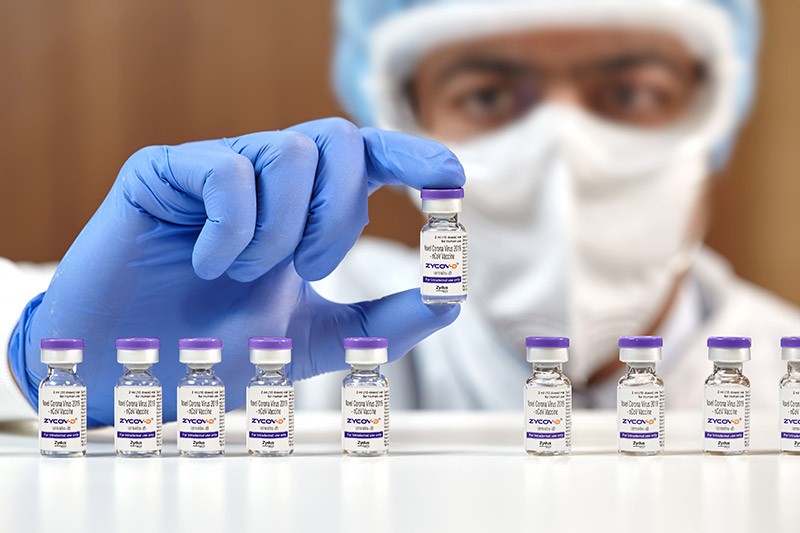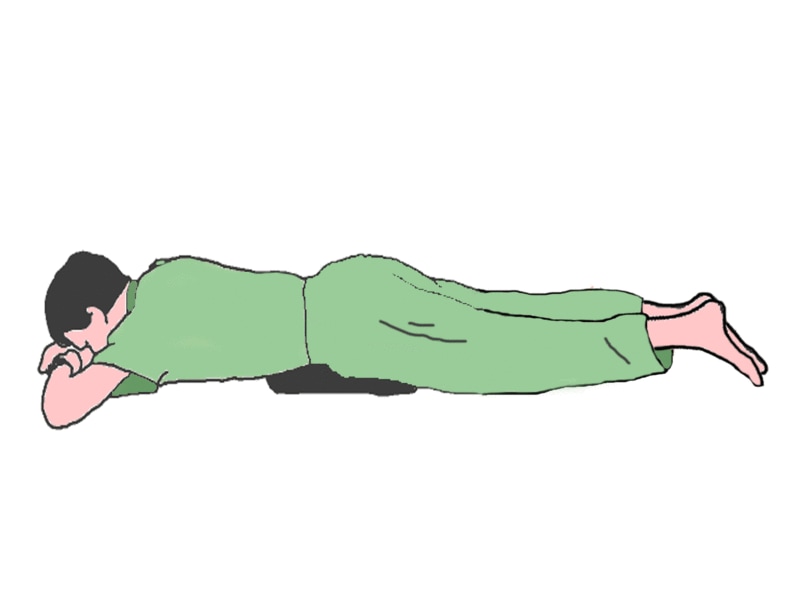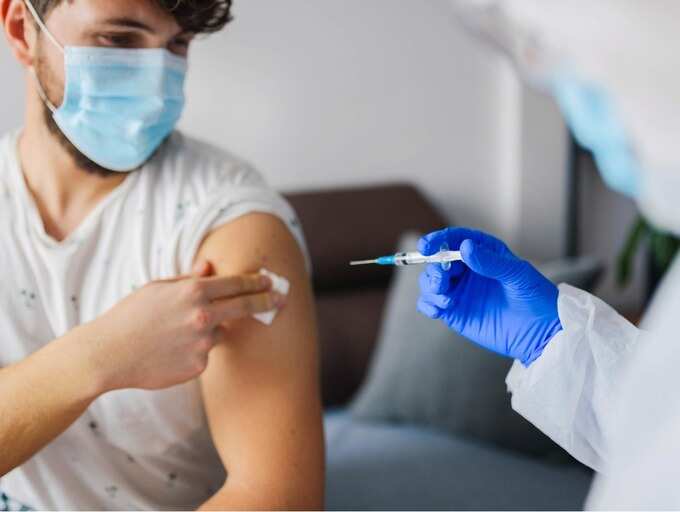
Any updates on antibodies are a quick head-turner given that economies have smashed and nations have halted while the Covid-19 pandemic keeps on seething. Presently, more than 1 crore individuals have been tainted worldwide in a half year since the main case was accounted for in China’s Wuhan. The infection has no known treatment yet.
The Narendra Modi government more than blew some people’s minds Friday with reports that it was planning to have an immunization prepared in about a month and a half, the preliminary for which is yet to start.
Antibodies are confounded to create and ordinarily set aside extensive stretches of effort to screen for viability, wellbeing, and symptoms.
Furthermore, it is dishonest to uncover members in a preliminary straightforwardly to a microorganism, hence dragging out the length of perception. However, because of the outrageous dire requirement for a COVID immunization, numerous antibody preliminaries have taken the questionable choice to deliberately contaminate study members to show up at results quicker.
How about we see how long immunizations take to grow, how they are assisted, and what the various kinds of antibodies being created for COVID-19 are.

How immunizations work:
Immunizations are natural substances which, when infused into our bodies, launch our invulnerable reaction to deliver antibodies. They do as such via conveying a more vulnerable type of microorganisms or infection or any malady causing microbe.
The measurement of the microbes doesn’t hurt our body however is conspicuous enough as an unfamiliar trespasser with the goal that the invulnerable framework begins battling it. Our invulnerable framework currently recalls the microbe it fended off, in this way remembering it at whatever point it or a comparative microorganism enters the body whenever. This outcomes in an inoculated individual’s safe framework reacting quicker, guaranteeing the individual doesn’t get the sickness.
Immunizations can be both prophylactic to forestall illness, and remedial to support a characteristic invulnerable reaction to a malady that has just tainted the body, similar to malignant growth.
Antibodies, all in all, ensure the populace and have been utilized to control plagues just as destroy ailments. The world has annihilated two up until now — little pox in people and rinderpest in creatures.
Phases of antibody advancement:

Immunizations and medications experience different phases of improvement, and with each stage, numerous antibody applicants get sifted through.
An exploratory phase of two to four years is the point at which the cycle regularly starts, where antigens are recognized and a potential guide for the antibody is drawn out. They at that point enter a pre-clinical stage or Phase 0 where microbial material is tried in vitro (in cell and tissue societies) just as on creatures to comprehend results that could be normal in people. This stage ordinarily endures one to two years.
Notwithstanding a pandemic like COVID, scientists are morally free to skirt these stages and straightforwardly dispatch into Phase I. This is the point at which the immunization is acquainted with people first. The goal is to build up the wellbeing of the immunization and comprehend the degree of invulnerable reaction. It ordinarily includes under 100 individuals and could last between a while to a year or two.
If security is set up, Phase II begins where 100 to 300 individuals are selected to test adequacy and comprehend symptoms. This goes on for around a few years.
Frequently, to assist testing, Phases I and II are joined.
Stage III preliminaries are the most critical. They keep going for around five to 10 years and select around 3,000 members for one immunization. The effective finish of Phase III is when genuine adequacy can be built up.
Once measurably critical viability is demonstrated, an immunization goes through an endorsement cycle (regularly two years), which additionally includes fabricating, scaling up, and drawing an inoculation drive plan, after which it is turned out or disseminated. When inoculation drives are in progress, Phase IV initiates, where long haul wellbeing and adequacy are contemplated.
The normal season of antibody improvement is somewhere in the range of 10 to 15 years in non-crisis circumstances.
Various types of antibodies
Antibody classifications are comprehensively ordered into two.
Live, constricted immunizations convey an amazingly debilitated microorganism that can’t cause the ailment, for example, the measles or BCG (Bacillus Calmette–Guérin) antibodies. Slaughtered or inert antibodies utilize either dead microorganisms or parts of a microbe. These antibodies are not as amazing as live ones and regularly require sponsor shots.
A murdered immunization can either convey the whole slaughtered microbe, for example, rabies or flu antibodies, or be a sub-unit immunization which doesn’t contain a full cell yet rather contains portions of a microorganism, for example, sugars or proteins found on the outside of microscopic organisms or infection. Hepatitis B and Human papillomavirus (HPV) antibodies are sub-unit immunizations. Indeed, even some formative COVID immunizations, as Novovax utilizes the spike protein of the infection to assist antibodies with perceiving the protein later.
There are currently various types of hereditary immunizations utilizing more up to date advances, for example, DNA/RNA antibodies where the hereditary material of a microorganism is acquainted with our bodies. Various RNA immunizations are presently being tried for COVID.
There are additionally popular vector immunizations, where one infection conveys hereditary material of another into our bodies straightforwardly, for example, the Oxford antibody being produced for COVID, where the spike protein quality is embedded into a chimp adenovirus.
The worldwide extended timetable for a working COVID immunization to be created is at any rate nine to a year, with antibody makers and different specialists saying that it could take as long as two years.
No antibody has been grown effectively inside courses of events like COVID.

The quickest to be affirmed and authorized was the mumps antibody, which went from gathering viral examples to being authorized in four years. The Ebola antibody was additionally optimized as a worldwide reaction to the serious 2014 episode, although the infection had been around since the 1970s. After testing and advancement, the antibody was affirmed and authorized among November and December of 2019 and is required to reveal this year.
From antiretrovirals to steroids, from focussing on ventilators to now searching for oxygen, a great deal has changed in the norm of care for Covid-19 in the course of recent months in India.
On Saturday, the Ministry of Health and Family Welfare gave overhauled treatment rules including dexamethasone, the economical and effectively accessible steroid, in treatment conventions.
The update, the fourth until date, comes almost fourteen days after the last one and after the consequences of recuperation preliminaries in the United Kingdom, utilizing dexamethasone, were made accessible on 18 June.
This is the way quickly the information about the infection has been evolving. By expansion, so have methodologies to oversee patients since the time the primary instance of novel SARS CoV2 infection was recognized at Wuhan in China in January.
“This is a pandemic, so the circumstance is dynamic. What is the norm of care today may not be so 15 days from now,” said Dr. Kedar Toraskar, chest doctor, Wockhardt Hospital, Mumbai, and an individual from the Covid-19 taskforce in Maharashtra. He, in any case, included that the information on the most recent three months has made the clinical network smarter about the ailment.
The reexamined rules too the one preceding it additionally incorporate remdesivir, gaining strength plasma treatment, and tocilizumab for moderate patients under “investigational treatments”, which have restricted accessible proof.
From the initial barely any weeks when it wasn’t sure about how to deal with patients and what could be the conceivable movement of the illness and manifestations, there has been a considerable amount of progress.
“Presently, the clinical club will before long have the option to discover if treatments still under scrutiny — including remdesvir, favipiravir, undeveloped cells, plasma treatment and tocilizumab — have any advantage or not,” said Dr Rashid Gouri, a senior occupant at AIIMS, New Delhi, who treats Covid-19 patients.
Most patients show gentle manifestations, get well at home
Perhaps the greatest change in the norm of care has been the way that most Covid-19 positive cases have gentle manifestations and needn’t bother with hospitalization and can show signs of improvement either in-home seclusion or institutional detachment habitats.
As per the biggest investigation of Covid-19 patients done in China and distributed in the Chinese Journal of Epidemiology, 95 percent of patients experience the ill effects of mellow manifestations, while 15 percent need oxygen treatment and 4-5 percent need ventilation.
Those with mellow indications can be observed for oxygen immersion with heartbeat oximetry and temperature at the COVID Care focuses. If the oxygen immersion dips under 80 percent, patients are prescribed to a higher focus.
The wellbeing service’s rules delivered in May likewise suggested that solitary the serious patients be moved to committed COVID clinics. It likewise permitted gentle and moderate patients to be released in 10 days without an affirmation test on the off chance that they had no manifestations for over three days. Prior patients required two negative RT PCR tests before release.
The current strategy bodes well as just the serious patients are involving the beds, specialists told.
Coronavirus contamination has two sections, one section where the infection reproduces and another part when there is an irritation that incorporates the cytokine part, said Dr. Om Srivastav, irresistible malady master from Jaslok Hospital, Mumbai.
He said the infection replication occurs in the initial 10 days and the effect on heart or lung occurs in the aggravation part of the disease after the 10 days.
“Presently the treatment methodology has been developed to recognize which part of the contamination the patient is in and address that part more forcefully,” said Srivastav. So the specialists endorse antivirals during the initial 10 days and calming drugs after the initial seven or 10 days.
No HCQ and Azithromycin, Tamiflu, Vitamin C

The rules in March just suggested Hydroxychloroquine (HCQ) and Azithromycin for extreme patients as no different antivirals were “demonstrated to be successful”.
While Azithromycin has been dropped from current rules, HCQ is as yet included.
Numerous ongoing examinations have demonstrated HCQ isn’t viable in diminishing mortality or results in numerous preliminaries, including RECOVERY preliminaries. It has been dropped from the World Health Organization’s progressing Solidarity preliminary to locate a powerful treatment for Covid-19 that included four medications.
The service’s momentum rules notice that “since these enormous observational examinations had a few constraints, HCQ is suggested in the beginning phase of the illness after an electrocardiogram is performed”.
Specialists, nonetheless, said that the utilization of HCQ in emergency clinics has nearly been halted now. “In the wake of taking a gander at the consequences of the examinations, we have now quit giving HCQ for over two months currently,” said Toraskar, who included that the mix of HCQ and Azithromycin is destructive and has additionally been halted.
Additionally the utilization of zinc, nutrient C tablets have halted just as that of oseltamivir, which worked for H1N1 disease, however, hasn’t demonstrated success for Covid-19.
Next came the antiretroviral drug blend of lopinavir-ritonavir, which was likewise used to treat patients in Jaipur. After starting a guarantee, notwithstanding, the mix didn’t show promising results in preliminaries and was dropped.
“The part of antiretroviral drugs lopinavir and ritonavir may now go down with new trial medicines like remdesivir and favipiravir coming in, however, these enemies of HIV drugs have assumed a significant function up to this point,” Dr. Gouri of AIIMS said.
Tenderfoots: Remdesivir and favipiravir
Presently the two antiviral medications that have much media consideration are remdesivir and favipiravir.
Favipiravir, an oral antiviral medication initially produced by Fuji Films and utilized for safe flu in 2014, has as of late been authorized to be sold in India at a cost of Rs 103 for every pill.
The medication, nonetheless, is definitely not an “enchantment shot” and can diminish the recuperation time yet should just be utilized for mellow patients. There are still no enormous preliminaries that have demonstrated its adequacy, said a few specialists.
“The issue with the medication is likewise that the pill trouble is high. You need to take nine pills the primary day and four pills two times every day for 6-14 days,” said Dr Toraskar.
Remdesivir, an intravenous antiviral medication has indicated great outcomes and was first suggested by the US’ top general wellbeing authority, the National Institute of Allergy and Infectious Diseases (NIAID), in April. The medication decreased the recuperation time yet didn’t significantly affect mortality.
The medication is best utilized for moderate to extreme patients and is utilized in the emergency unit the initial 10 days of the disease, said Dr. Toraskar.
In India, remedesivir was just accessible under humane use and will before long be accessible for “crisis limited use” in emergency clinics after Cipla and Hetero got the permit for assembling and deal.
“Remdesivir has indicated great outcomes on the 25 patients that we utilized the medications for in the ICU,” said Dr Harsh Chafle, expert intensivist and chest doctor, Global Hospital, Mumbai.
Steroids have a job
Specialists were utilizing steroids in the serious consideration units however now have been approved by the UK RECOVERY preliminary, which has demonstrated that dexamethasone can lessen mortality for extreme patients and the individuals who require ventilation.
The investigation utilized 6 mg of dexamethasone for 10 days on decently sick patients and the individuals who need oxygen supplementation.
“It is critical to realize that if you use it early or for gentle patients, it will be destructive,” said Toraskar, who included that it ought to be utilized after the tenth day for patients who are tolerable to seriously sick and who require oxygen.
There is additionally a function for anticoagulants or blood-thinners since the Covid-19 has been known to cause irritation and clump development. These are suggested for moderate patients in the new rules.
Oxygenation and Pruning

Prior, the technique was to utilize a ventilator at an early stage yet now the methodology is to defer utilizing an obtrusive ventilator however much as could be expected, said Dr. Chafle. Obtrusive ventilation is the point at which a cylinder is embedded into the patient’s windpipe by a cycle called intubation.
Presently, specialists favor oxygenation through high stream nasal cannula (HFNC) and non-obtrusive ventilators.
Clarifying how HFNC functions, Chalfe stated,
“Oxygen can be given in focal oxygen giving gadgets or chambers. HFNC gadgets give a similar oxygen all the more successfully by giving it with high weight and dampness.”
Patients who were intubated have revealed higher mortality yet that is because those patients are more genuine, said Dr. Toraskar. The plan to defer intubation is to lessen the aggravation with steady oxygen and medications.
In any case, the expression of alert is to not postpone intubation to an extreme so the patient weakens, said Dr. Toraskar, including that if the HFNC and non-oxygenation come up short, patients ought to be ventilated.
He said specialists likewise utilize a method called pruning, which is situating the patient on his gut when the patient is intubated. He included that it is demonstrating acceptable outcomes for patients with Acute Respiratory Distress Syndrome (ARDS).
“We are proning early and for a more drawn out time contrasted with routine ARDS patients,” he included.
Pruning has been suggested for moderate and extreme patients in the rules.
‘Timing is basic’
While there is no enchantment slug for the treatment of Covid-19, the main thing that specialists have gained as a matter of fact is the “criticality of the hour of changing the treatment and the perfect season of beginning a specific treatment”, said Dr. Vikas Maurya, chief and head of the division, Respiratory Medicine and Interventional Pulmonologist, at Fortis Hospital, Shalimar.
Presently, specialists know which treatment works at what stage, for instance, plasma treatment won’t work in the later period of the sickness, Maurya said.
“Toclizumab decreases the irritation when the cytokine storm starts. Presently we realize that it starts from the second seven day stretch of disease and the medication must be begun from the eighth day,” he included.
Specialists, in any case, alert that even with the new medications, the proof has been questionable.
There have been more than 30,000 investigations distributed on Covid-19 from January to May 2020, a large number of them pre-prints that did exclude a friend survey. Indeed, even rumored diaries, for example, The Lancet and BMJ have needed to withdraw their papers.
“The nature of exploration is terrible at the present time — everything without exception is getting distributed and one needs to take a gander at the preliminary cautiously to really check whether things are working or not,” said Dr. Sheetu Singh, collaborator teacher, Institute of Respiratory Medicine, SMS Medical College, Jaipur.
Srivastav of Jaslok Hospital in Mumbai said that knowing the volume of papers distributed each day, a paper distributed on a little arrangement of patients ought not to impact doctors.
“They ought to embrace rehearses that are deductively based and that stand logical examination originating from a very much organized preliminary,” he said.
Additionally, it is critical to recollect even with new medications, no immunization or medication forestalls or fixes Covid-19 and specialists can simply offer steady treatment that bolsters the body as it battles the contamination, he included.
While most patients who are quitting any funny business are those over the age of 50 with co-morbidities, there are passings in more youthful, apparently solid patients inside long stretches of hospitalizations as the cytokine storm has set in, said Singh.
“Regardless of whether the open time frame is on, don’t step out except if it is essential,” said Dr Chalfe. “Use veils, sanitisers and arrive at a specialist early in the event that you have side effects, similar to at least three days of high fever.”





